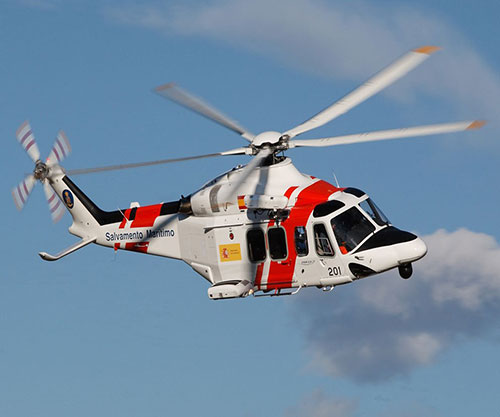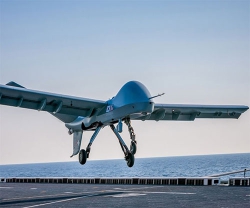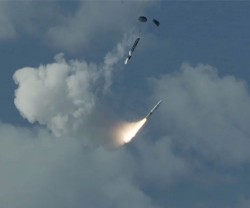Honeywell has successfully demonstrated several advanced alternative navigation technologies that are intended to help ensure seamless navigation, even when GPS signals are blocked, interrupted or unavailable. Testing took place on both an Embraer E170 aircraft and an AgustaWestland AW139 helicopter.
Alternative navigation systems use sensors such as cameras, star trackers, radars and radios to augment and or aid inertial navigation systems. These systems correct inertial navigation systems in environments where global navigation satellite systems (GNSS) are denied.
“Our customers are seeing an increase in both intentional and unintentional navigational disruptions, including jamming for GNSS-based navigation,” said Matt Picchetti, Vice President and General Manager, Navigation and Sensors, Honeywell Aerospace.
“There hasn’t been a single set of solutions that meet all our customers’ operational needs, so we decided to create one. Our modular and scalable alternative navigation technologies are setting a new benchmark in terms of reliability and performance in GNSS-denied environments compared with what is available in aviation today,” he added.
Alternative navigation technologies provide vital position, velocity and heading information in GNSS-denied environments. The successfully demonstrated technologies onboard the E170 and AW139 include the following:
- Vision Aided Navigation: Honeywell’s Vision Aided Navigation system achieved GPS-like performance on both the Embraer E170 and AW139 platforms during GPS-denied conditions. Additionally, the technology showed 67% improvement in GPS-denied performance compared with earlier testing last year. The system uses a live camera feed and compares it with maps to provide a passive, not jammable, and highly accurate absolute position.
- Celestial Aided Navigation: Honeywell’s Celestial Aided Navigation system on the Embraer E170 achieved an accuracy of 25 meters circular error probability of 50% (CEP50). This represented a 38% improvement in GPS-denied performance compared with tests last year. Most importantly, this is the first time a Resident Space Objects-based (RSOs) navigation solution was demonstrated on an airborne platform, as most competing solutions rely only on star-based navigation. The system utilizes a star tracker to observe stars and RSOs to provide a passive, not jammable solution with GPS-like accuracy in GPS-denied or spoofed conditions.
- Magnetic Anomaly Aided Navigation: Honeywell conducted the world’s first real-time magnetic anomaly-aided navigation on an airborne platform — the Embraer E170. This is a historic milestone, as almost all previous magnetic tests were done in special environments to mitigate electromagnetic noise. Honeywell demonstrated this passive, not jammable, all-weather, 24/7 technology on an embedded platform, which measures earth’s magnetic strength and compares it with magnetic maps to accurately identify the position of the vehicle.
Additionally, Honeywell demonstrated inertial navigation systems, when paired with the GPSDome (anti-jamming device), showed significant improvement in position accuracy and integrity performance in the presence of GPS jamming. The ability of GPSDome to enable tracking of GPS satellites under more aggressive jamming environments reduces performance degradations that come with GNSS-denied conditions.
Alternative navigation prototype systems will be available in 2022, with initial deliveries expected to start in 2023.
Honeywell navigation systems are used by nearly every aircraft flying today to guide millions of passengers to their destinations. Since 1914, when the first autopilot used Honeywell gyroscopes to hold the plane stable during flight, Honeywell has delivered more than 500,000 high-performance inertial sensors across several platforms on land, in the air and at sea.






















